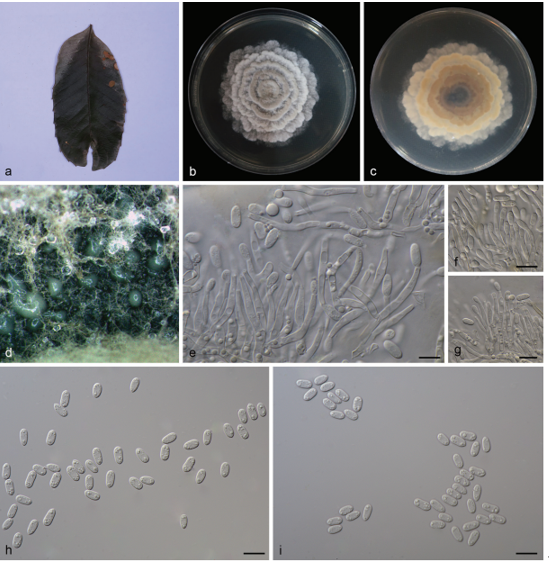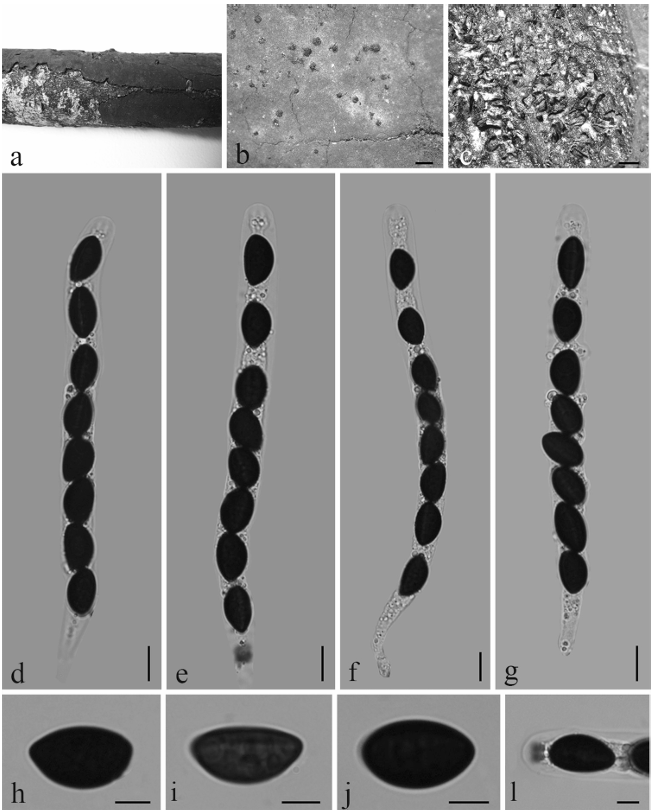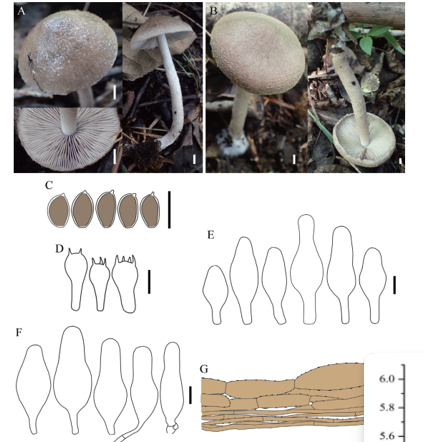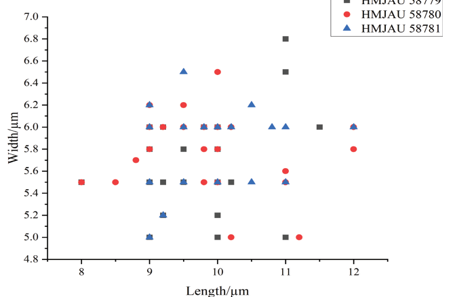Termitomyces upsilocystidiatus S.M. Tang, Raspé & K.D. Hyde 2020
MycoBank MB 833137 Faces of Fungi: 06724
Holotype: CHINA. Yunnan Province, Dali prefecture, Nan-Jian county. 25°02.376’N, 100°30.174’E. 1,500 m a.s.l., 3 September 2016, collected by Hong-Yan Su (MFLU19-1289, holotype!).
Morphological description
Pileus 5–11.3 cm diam., depressed, with large, obtuse umbo-shaped perforatorium, frequently cleaving toward margin; surface pale brownish grey (4B2–6C2–3), gradually slightly paler toward margin, glabrous. Lamellae free, 0.8–1.0 cm broad, crowded, white (1A1) to pinkish white with age; margins fimbriate, irregularly eroded to cleaved at places, concolorous, lamellulae in 1–2 tiers. Stipe 4.5–5.5 × 1.5–1.7 cm, central, cylindrical, with bulbous base up to 3 cm, exannulate, off-white, smooth, glabrous, solid. Pseudorrhiza cylindrical, tapering, white, longitudinally striate, solid, fibrous. Context white, up to 4 mm thick under perforatorium. odour slightly fragrant. Taste sweet. Spore print pinkish.
Basidiospores [49/10/2] (4.8)4.9–5.56–6.7(6.8) × (3.5)3.6–3.74–4.1(4.2) µm, Q = 1.48 ± 0.11, ovoid to ellipsoid, thin-walled, hyaline. Basidia (18.0)18.5–21.5(24.0) × (5.8)6.0–7.3(8.0) µm, clavate to slightly flexuose with one, two or four sterigmata. Cheilocystidia 36.0–59.1 × 12.3–23.0 µm, typically Y-shaped, sometimes merely gibbose or triangular, thin-walled, hyaline. Pleurocystidia 45.6–76.9 × 19.8–38.6 µm, fusiform. Hymenophoral trama 131–205 µm wide, regular, thin-walled, hyaline hyphae, 6–13 µm wide. Hymenial layer 300–400 µm wide. Pileipellis a cutis 300–440 µm thick, of radially oriented hyphae, 15.0–18.0 µm wide. Pseudorrhiza context of thin-walled, hyaline hyphae, 9.3–12.0 µm wide.
Habitat: In plantation or forest, above subterranean termitaria.
Distribution: In Yunnan Province, China.
GenBank Accession: mrSSU: MN636642; nrLSU: MN636637
Notes: Termitomyces upsilocystidiatus is morphologically distinguished from other Termitomyces species with greyish to greyish brown pileus by its mostly Y-shaped cheilocystidia. Macroscopically, T. upsilocystidiatus is most similar to T. umkowaan and T. subumkowaan, with which it shares the general aspect of the pileus (colour, shape of perforatorium, cleaving in age, and, to a lesser extent, size) and stipe (pale colour, absence of annulus and squamules, swelling at the base). However, it clearly differs from those two species by the Y-shape of the cheilocystidia, as T. umkowaan (Cooke & Massee) D.A. Reid (1975: 118) and T. subumkowaan Mossebo (2002: 118) produce mostly clavate, scattered or rare cheilocystidia (Mossebo et al. 2002, Van der Westhuizen & Eicker 1990). Moreover, T. umkowaan macroscopically differs from T. upsilocystidiatus by somewhat larger basidiomes (pileus up to 22 cm in diam.), while T. subumkowaan differs from the former two species by its blackish pseudorrhiza (Mossebo et al. 2002, Van der Westhuizen & Eicker 1990). Another similar species is the common T. eurrhizus, which differs from T. upsilocystidiatus by the darker (umbrinous) perforatorium, the black-brown encrusted pseudorrhiza, and the obovoid to pyriform hymenial cheilocystidia (Pegler & Vanhaecke 1994). Phylogenetic analyses confirmed T. upsilocystidiatus is different from other sequenced Termitomyces species, including T. subumkowaan and T. eurrhizus. Termitomyces umkowaan, however, was not included in the phylogenetic analyses because of the unavailability of sequences.
Reference: SONG-MING TANG1,2,3,6, MAO-QIANG HE4,7, OLIVIER RASPÉ2,3,8*et al.
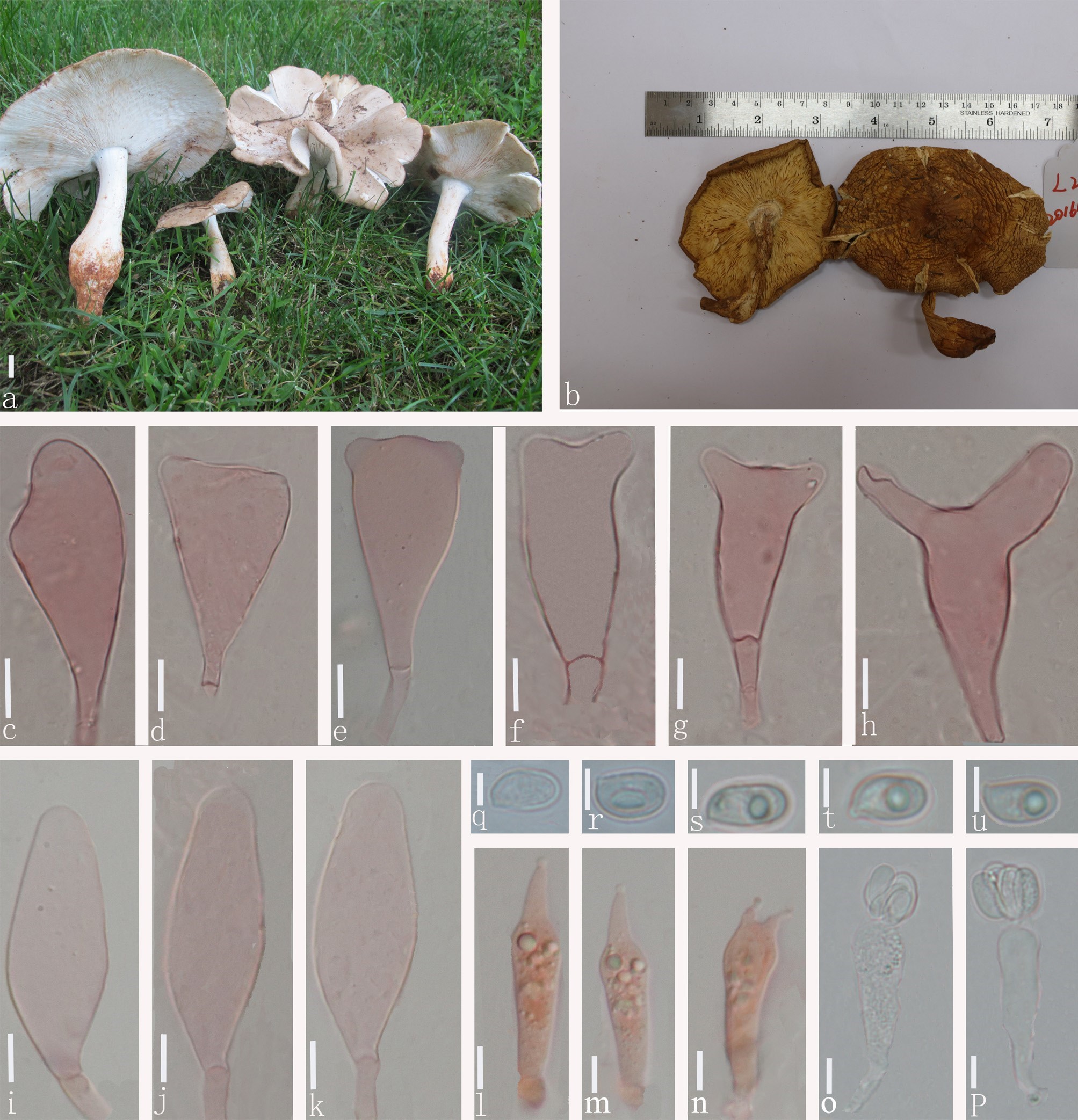
Termitomyces upsilocystidiatus. a–b. basidiomes; c–h. cheilocystidia; i–k pleurocystidia; l–p. basidia; q–u. basidiospores. Scale bars: a = 2 cm; c–k = 5 µm, l–p = 2 µm, q–u = 1 um. Photos by: Song-ming Tang.


